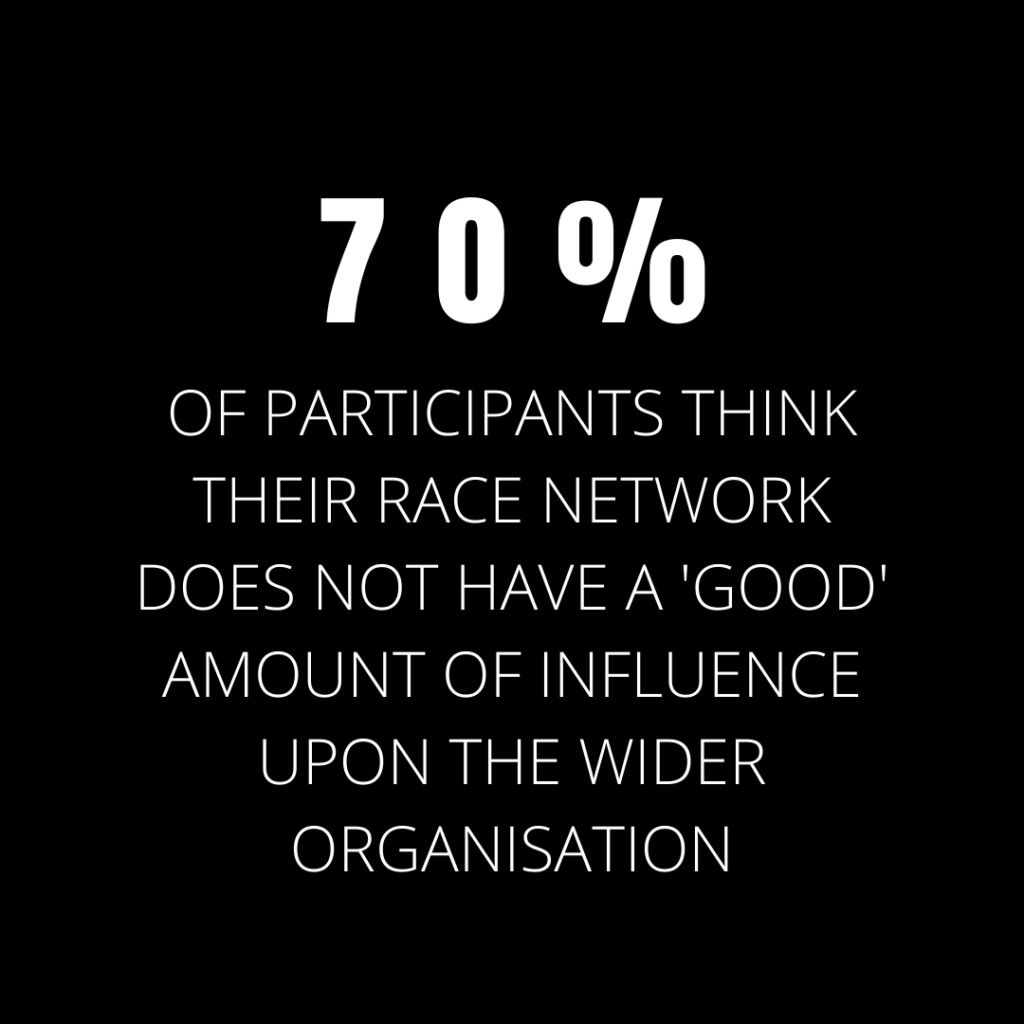Over 70% of people think their Race Network does not have a ‘good’ amount of influence upon the wider organisation.
Race Equality Matters collected this poll data at our Race Network Lead and Future Lead Networking Series event on 12th January 2022. With our network of 1000+ network leads and expert speakers, Race Equality Matters has formulated examples of how Race Networks can engage key stakeholders to better facilitate integration and influence within organisations. Engagement is necessary for impactful change towards race equality in the workplace and stakeholders are a good place to start.
Drawing from lived experience and Race Network success stories, we interviewed and listened to expert speakers:
- Ugo Paul Eboh (Co-Chair of Embrace Network | Virgin Money)
- Dr Karl George MBE (Head of Governance | RSM, formerly Managing Director | the governance forum Ltd)
Here are 3 key principles to attain engagement in your Race Network from the organisation’s stakeholders: strategy, validity and leadership.
1. STRATEGY. Taking a strategic and planned approach within a Race Network will facilitate better engagement with external groups.
Through taking a strategic approach to the tailored aims of the Race Network, leaders will be more inclined to shift the dial on ethnicity and race. This plan will work towards your Network’s long-term aim, fitting within the wider organisation and central strategy. If your organisation is particularly large or going through a period of change, clear aims will resonate and reach sponsors and the top level more effectively. As your aims and targets expand, your Race Network should too. Therefore, establishing sub-committees for established strategies (such as awareness, recruitment, advertisement, and marketing etc.) will facilitate specialism and thus engagement.
You should also consider the nature of your organisation when formulating the strategy, such as the proportion of allies compared with race and ethnic minorities. If your organisation’s demographic has significantly high numbers of allies, this may tailor your Network’s strategy. This could be through sharing lived experiences alongside educational resources on allyship. Formulating and demonstrating a strategy to stakeholders will increase engagement in and understanding of the Race Network’s aims.

2. VALIDITY. If your Race Network has self-validation, this will catalyse stakeholders’ validation and a desire to engage.
Promoting your Race Network as an integrated feature of your organisation, not an ‘extra’, will increase its validity as a committee. Whilst this relies on senior leadership engagement to an extent, validity can be an internal realisation too.
For Ugo, validity started with the terms used by his network at Virgin Money: vocalise your ‘strategy’, establish ‘committees’ and create effective ‘structures’.
These small changes can improve the appearance and perceived credibility to your Race Network. Validity develops overtime and can be upheld by integrating within all areas of the organisation. This includes scheduling regular meetings with board members and engaging with all departments, such as HR and brand management. Validity facilitates influence, and therefore efficacy.
3. LEADERSHIP. A Race Network with visible and good leadership, that represents collective opinions, will improve stakeholder engagement.
Whether your Race Network selects one chair or several co-chairs, they act as the link between Network members and an organisation’s stakeholders. Chairs can also facilitate integration. Karl advised on the need for effective chairmanship of meetings through sufficient preparation, good timekeeping and strong decision making. Provision of leadership training will improve these core skills and make leadership roles within the Network more accessible. Chairs must hold themselves accountable to incorporating the individual visions of all within their group into a collective one. Therefore, to engage with stakeholders you must first identify the link: a good leader(s). As Ugo instructed, to establish influence within your organisation, first:
“You have to think like a CEO.”
The principles used by our expert speakers- strategy, validity and leadership– can be applied to your Race Network today.
For further guidance on how to improve your organisation’s Race Network, please find the Solutions on our website and sign up to our Race Network Lead and Future Lead Networking Series events.

